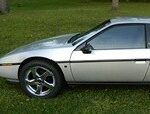It’s a common question for owners of older heavy-duty trucks like a 1995 Freightliner: Can you use a cheap, standard OBD2 scanner to read diagnostic data? The simple answer is, it’s not as straightforward as it is with cars. While the idea of using an affordable OBD2 scan tool is appealing, the reality is that communication protocols for heavy-duty vehicles, especially those from the mid-90s, are different.
The key distinction lies in the data protocols used. While modern cars and trucks largely adhere to OBD2 standards, older heavy-duty vehicles like your ’95 Freightliner often utilize different communication languages. Think of it like this: even if you have a connector that physically fits – like assuming you can understand Spanish because you both use words – if your diagnostic tool speaks OBD2 (like English) and your Freightliner speaks J1708 (like Spanish), communication will fail.
For 1995 Freightliners, the primary protocol in use was often J1708 (SAE J1587 is the protocol name). This is a different communication standard than OBD2. While both might use similar physical connections based on RS485/RS422 serial communication, the way data is transmitted and interpreted is vastly different.
Manufacturers like Navistar utilized J1708 extensively in their engines. For example, Navistar continued using J1708 up to 2007 on the VT365 engine and until 2006 on the DT466. It wasn’t until the introduction of the MaxxForce engines that J1708 was phased out in favor of newer protocols.
Similarly, Allison transmissions began adopting the J1939 protocol as early as 1998, moving away from J1708. Although earlier Allison electronic controls like WTEC-II had some similarities to J1708, the industry trend was shifting towards J1939, which is based on CAN BUS technology and represents a more modern standard.
Therefore, in vehicles like Navistar-equipped Freightliners from the late 90s, you often find both J1708 and J1939 protocols present. The 9-pin connector was specifically designed to accommodate both, becoming more common around 1997-1998, particularly on models like the T444E and DT466E when electronic engine controls became more sophisticated. Even when Allison 1000/2000 series transmissions were introduced around mid-year 2000, Navistar started installing 9-pin connectors across their bus chassis, regardless of the transmission specified, to handle these different protocols.
So, what are your options for diagnosing a 1995 Freightliner? A basic OBD2 scanner is unlikely to work for reading engine or transmission data that relies on J1708 or J1939. You’ll need to consider tools that are designed to speak these protocols.
There are specialized scan tools available, often more expensive than basic OBD2 scanners, that are capable of reading and displaying data from OBD2, J1708, and J1939. These are valuable investments if you work on both cars and heavy-duty vehicles. For example, products like Bluefire are specifically designed to interface with J1708 and J1939 systems. Bluefire, in particular, offers solutions that can create digital dashboards in your vehicle, displaying engine and system data. The 9-pin connector versions of these tools typically support both J1708 and J1939, while 6-pin versions are often primarily focused on J1708.
If your goal is simply to create a digital dashboard display in your Freightliner bus, there are various aftermarket solutions. While the author of the original text mentions using systems like SilverLeaf VMSpc and EFILive, and even custom-written software, for older setups, Bluefire represents a more modern and readily available option for achieving a similar outcome, especially if it had been available earlier.
In conclusion, while the idea of using a standard OBD2 scanner on a 1995 Freightliner is tempting due to its simplicity and affordability, it’s crucial to understand the communication protocol differences. For vehicles of this era, especially heavy-duty trucks, J1708 and potentially J1939 are the relevant protocols. To effectively diagnose and monitor your ’95 Freightliner, you’ll need to explore scan tools and diagnostic solutions that are compatible with these heavy-duty communication standards, rather than relying solely on OBD2.
[
